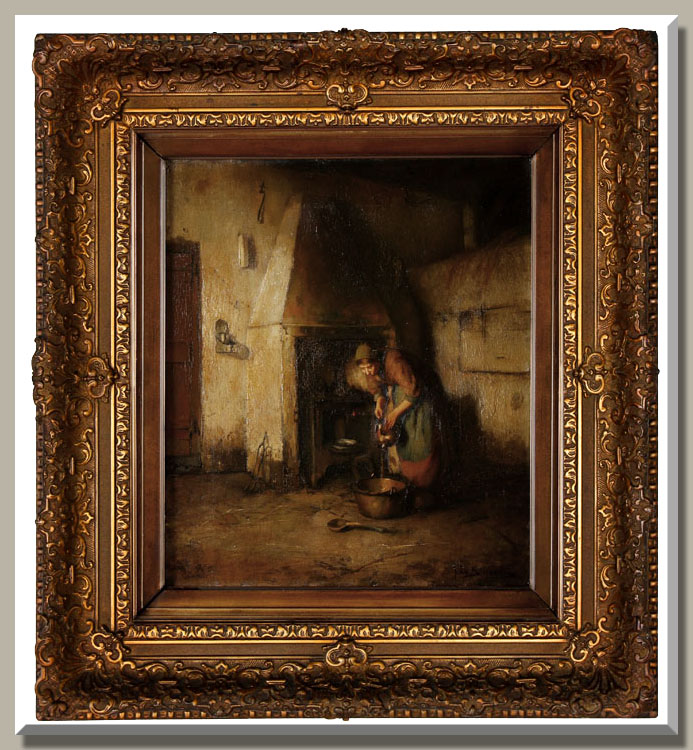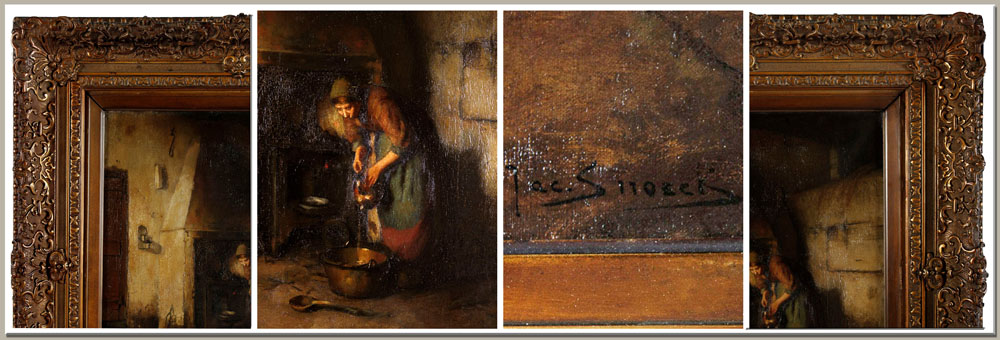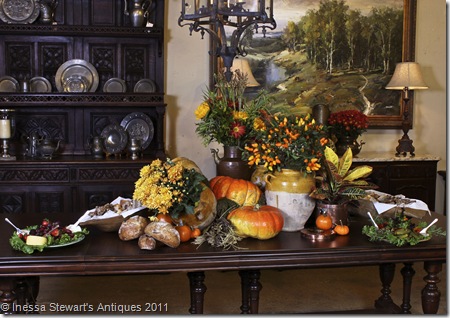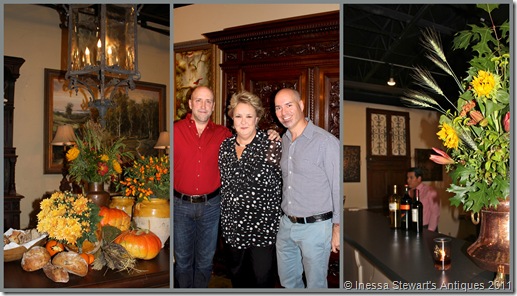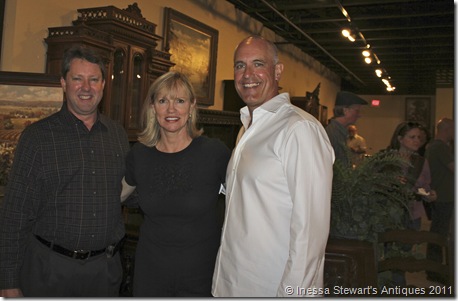 n this installment of our series, we continue with nineteenth century France ~ a period that was pivotal in the history of antique French furniture. Within the first decade, Europe witnessed the fall of Napoleon whose very name struck fear in the hearts of English and European citizens and nobility. His aftermath led to a restoration of the established French monarchy, culminating in the reign of Louis Philippe. Political turmoil was averted when France ushered in its Second and final Empire, witnessing Bonaparte’s nephew, Napoleon III, taking his place in French history. All of this simultaneously occurred during the formative decades of an even more significant and far-reaching epoch ~ the so-called Second Industrial Revolution, which had a profound effect on the style and production of French antiques.
n this installment of our series, we continue with nineteenth century France ~ a period that was pivotal in the history of antique French furniture. Within the first decade, Europe witnessed the fall of Napoleon whose very name struck fear in the hearts of English and European citizens and nobility. His aftermath led to a restoration of the established French monarchy, culminating in the reign of Louis Philippe. Political turmoil was averted when France ushered in its Second and final Empire, witnessing Bonaparte’s nephew, Napoleon III, taking his place in French history. All of this simultaneously occurred during the formative decades of an even more significant and far-reaching epoch ~ the so-called Second Industrial Revolution, which had a profound effect on the style and production of French antiques.

This creation of Parisian master artisans during the reign of Napoleon III, France's last emperor, represents the supremacy of 19th century French craftsmanship by which everything produced since has been judged.
The Restoration and Louis Philippe Period (1815-1848) Various European monarchies tried to influence the disposition of the French government after the fall of Napoleon Bonaparte, but ultimately the restoration of the ancient dynasty became the most favorable course to take. The French royal family played the winning trump cards ~ their mere existence and availability. For three successive regimes the Bourbons once again ruled France: Louis XIII (1815-1823), Charles X (1823-1830) and finally Louis Philippe (1830-1848). Gone was the extravagant look of the Empire style in favor of unpretentious, simple lines that characterize the Restoration. Skilled craftsmen utilized fine veneers and inlay of contrasting wood for ornamentation, eschewing heavy carved detail.

For this Louis Philippe Antique walnut commode, the artisans relied on the sheer natural beauty of the wood, carefully "bookmatching" the grain patterns to create a visual feast for the eyes on the entire facade including the top.
During the early years of this transitional period the lighter woods were preferred, such as blonde walnut ~ but tastes gradually returned to darker woods by the reign of Louis Philippe. The architecture and style of the Restoration continued throughout the period, with additional adornments just beginning to resurface towards the end of Louis Philippe’s reign. Two of the most significant developments are the commode and what we now call the “sleigh” bed, which at the time was called the lit bateau after its resemblance to a boat. Tulip-shaped moldings and drawer tiers were pervasive on the commodes, with swan-shaped motifs on chairs and beds. Gondola chairs appeared, influenced by Venetian style, and volutes became common embellishments. Center tables in salons with a pedestal support were topped with Carrara and gray marbles.

This Louis Philippe period center table represents the clean lines and exotic woods characterized by the early years of the age.
Other developments that appeared during the Charles X & Louis Philippe periods were the resurgence of Gothic, Egyptian and Oriental designs. Production of furniture during that period became a true industry, when the emerging middle class needed furnishings for their apartments and smaller homes. Bronze mounts were seen occasionally, but not nearly to the degree seen during the First Empire.

This stunning mirror recalls the glory years of the Napoleon III period when styles were revived from French history and given new life.
Napoleon III Period (1848-1870) Exiled in England while the Bourbon family played its final card in the history of France, Napoleon III had a family history that reads like a soap opera. Josephine, Napoleon’s first wife, had a daughter from her first marriage, Hortense, who married Napoleon Bonaparte’s brother. The couple had two sons, and after the first died, Napoleon III became the only heir. Bonaparte’s son from his second marriage proved inadequate for rule, opening the door for Napoleon III to seize the opportunity when the French political environment was disposed towards a Second Empire.

Rendered from French walnut during the heyday of the Napoleon III period, this vitrine exhibits a timeless combination of architectural features and hand-carved embellishments that made it as much of a conversation piece as the heirlooms which it displayed.
The Napoleon III period was intensely nostalgic, and borrowed from all periods of French history. During his two decades of reign, the Empress Eugenie played a large role in the direction of styles. Inspiration was drawn from the Gothic, Renaissance, Louis XV, Louis XVI~ even the English Victorian and Regency styles. One of the more significant developments was the merging of the Louis XVI style with the Henri II, which created a unique look that has come to be known as the Napoleon III style. The luxurious appointments of previous eras were reborn, such as Boule-style marquetry and ormolu mounts. Exquisite rosewood and mahogany were prized, and a process known as ebonizing became in vogue, turning indigenous woods into furnishings that looked as if they were made from exotic and highly prized ebony.

This Louis XVI armoire is crafted from fine mahogany and features gilded carvings of floral wreaths and foliage.
Experiments in exotic and eclectic looks were frequent, including papier mache, japanned & lacquered finishes, chinoiserie marquetry, with inlays of stone, mother of pearl, and even ivory appearing during this period.

This exceptional soup tureen, hand-crafted in Paris during the Beaux Artes period includes its original serving platter.
This unprecedented style diversity in combination with the development of refined furniture manufacturing techniques fueled the demand from a burgeoning middle class marketplace and laid the foundations for the Golden Age, known in France as the Beaux Artes period which transitioned through the dawning of the 20th century.

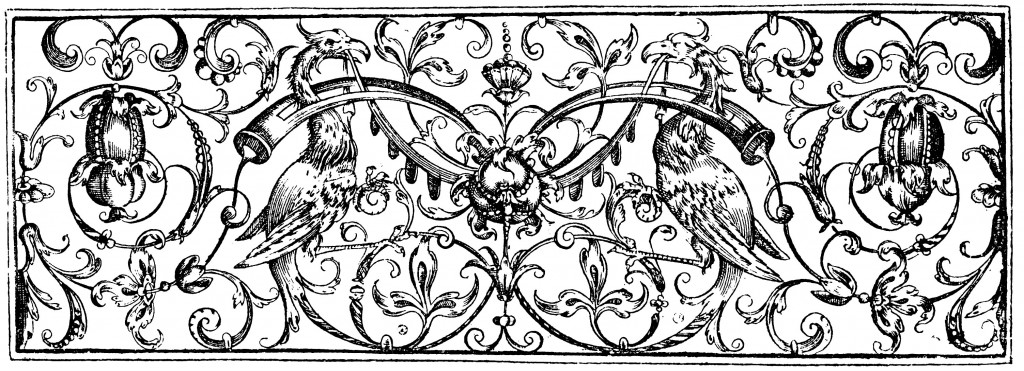

 utch
utch 